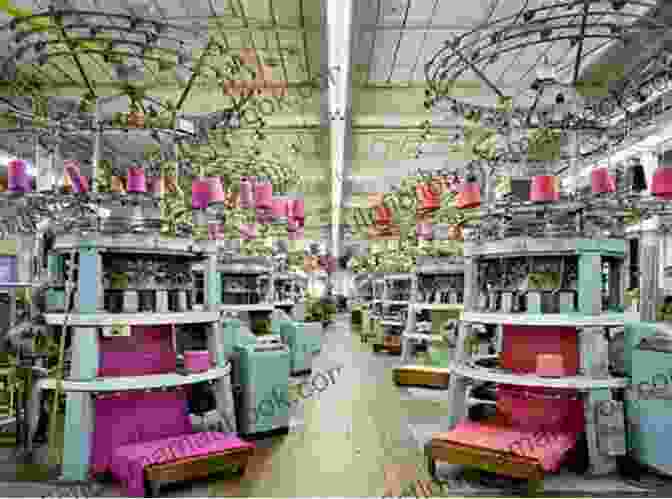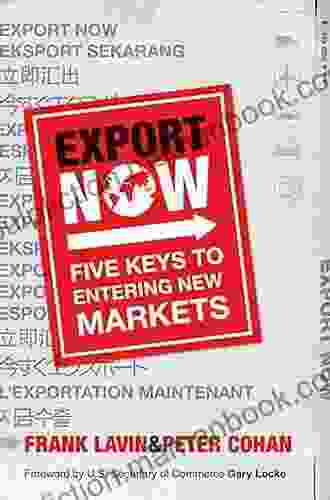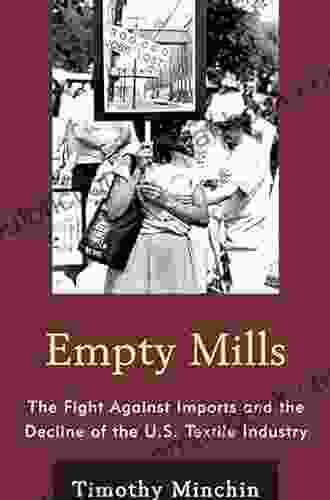The Fight Against Imports and the Decline of the Textile Industry: A Detailed Exploration

The textile industry has played a pivotal role in global economies for centuries. From the vibrant hues of ancient Egyptian linens to the intricate tapestries of medieval Europe, textiles have adorned human bodies, homes, and societies. However, the industry has faced significant challenges in recent decades, particularly due to the influx of imported textiles. This article will delve into the multifaceted fight against imports, exploring its historical roots, economic consequences, and the ongoing efforts to revitalize the struggling textile industry.
Historical Roots of Import Resistance
The fight against imported textiles has a long and complex history, dating back to the early days of industrialization. As textile production shifted from manual labor to mechanized factories, countries with lower labor costs began exporting vast quantities of cheap textiles. This influx threatened domestic textile industries in countries with higher labor costs, leading to widespread protests and protectionist measures.
4.6 out of 5
| Language | : | English |
| File size | : | 2898 KB |
| Text-to-Speech | : | Enabled |
| Screen Reader | : | Supported |
| Enhanced typesetting | : | Enabled |
| Word Wise | : | Enabled |
| Print length | : | 352 pages |
In the United States, the first major textile imports came from Great Britain in the late 18th century. American textile manufacturers, fearing job losses and economic decline, lobbied government officials for protection. In response, the government implemented tariffs and other measures to limit imported textiles, marking the beginning of a long-standing struggle.
Economic Consequences of Import Competition
The rise of import competition has had a profound impact on the textile industry worldwide. As foreign textiles flooded markets, domestic producers faced intense price pressure and declining profits. Many textile mills and factories were forced to close, leading to widespread job losses and economic hardship in textile-producing regions.

The consequences of import competition extended beyond the textile industry itself. The loss of textile jobs led to reduced spending in local communities, further exacerbating economic decline. Moreover, the relocation of textile production to countries with lower labor costs contributed to global inequality, as workers in developed countries often faced stagnant wages and limited job opportunities.
Efforts to Revitalize the Textile Industry
Faced with the decline of the textile industry, governments and industry leaders have implemented various strategies to revitalize this vital sector. These efforts have included:
* Tariffs and Quotas: Governments have used tariffs (taxes on imported goods) and quotas (limits on the quantity of imports) to protect domestic textile producers from foreign competition. However, these measures have been criticized for increasing consumer prices and hindering free trade. * Subsidies and Incentives: Governments have also provided subsidies and tax incentives to textile companies to encourage domestic production and innovation. These incentives have helped to offset the higher labor costs faced by domestic producers. * Technological Advancements: The textile industry has invested heavily in technological advancements, such as automation and new fiber development, to improve efficiency and reduce production costs. These innovations have helped to level the playing field with foreign competitors. * Designer Collaborations: Textile manufacturers have partnered with renowned designers to create high-value, niche products that cater to luxury consumers and command higher prices. This strategy has helped to differentiate domestic textile products from mass-produced imports. * Sustainable Production: Consumers are increasingly demanding sustainable products, presenting opportunities for the textile industry to differentiate its offerings. By embracing environmentally friendly practices and sourcing materials responsibly, textile companies can tap into the growing market for sustainable fashion.
Ongoing Challenges and the Future of the Industry
Despite these efforts, the textile industry continues to face significant challenges. Import competition remains intense, and the rise of fast fashion has further eroded profit margins for domestic producers. Additionally, the global economic slowdown and ongoing trade disputes have created additional uncertainty for the industry.
To navigate these challenges and secure the future of the textile industry, industry leaders and policymakers must continue to explore innovative strategies. These include:
* Investing in Education and Training: Investing in education and training programs for textile workers will ensure that the industry has a skilled workforce equipped to adapt to new technologies and market demands. * Promoting Innovation: Continued investment in research and development will lead to new products, processes, and technologies that enhance the competitiveness of domestic textile producers. * Supporting Fair Trade: Supporting fair trade practices and ensuring that workers in the textile industry are treated fairly and paid a living wage will help to restore balance to the global textile market. * Embracing Digitalization: Embracing digitalization, such as virtual design and online sales platforms, can help textile companies reduce costs, improve efficiency, and reach new customers.
The fight against imports has been a defining challenge for the textile industry. The influx of cheap imported textiles has led to the decline of domestic textile production, job losses, and economic hardship in textile-producing regions worldwide. While efforts have been made to revitalize the industry through protectionist measures, subsidies, technological advancements, and designer collaborations, the challenges remain significant.
To ensure the future of the textile industry, stakeholders must continue to invest in education, training, and innovation. Supporting fair trade practices and embracing digitalization will also be crucial. By addressing these challenges and leveraging new opportunities, the textile industry can adapt to the changing global landscape and regain its former glory.
4.6 out of 5
| Language | : | English |
| File size | : | 2898 KB |
| Text-to-Speech | : | Enabled |
| Screen Reader | : | Supported |
| Enhanced typesetting | : | Enabled |
| Word Wise | : | Enabled |
| Print length | : | 352 pages |
Do you want to contribute by writing guest posts on this blog?
Please contact us and send us a resume of previous articles that you have written.
 Top Book
Top Book Novel
Novel Fiction
Fiction Nonfiction
Nonfiction Literature
Literature Paperback
Paperback Hardcover
Hardcover E-book
E-book Audiobook
Audiobook Bestseller
Bestseller Classic
Classic Mystery
Mystery Thriller
Thriller Romance
Romance Fantasy
Fantasy Science Fiction
Science Fiction Biography
Biography Memoir
Memoir Autobiography
Autobiography Poetry
Poetry Drama
Drama Historical Fiction
Historical Fiction Self-help
Self-help Young Adult
Young Adult Childrens Books
Childrens Books Graphic Novel
Graphic Novel Anthology
Anthology Series
Series Encyclopedia
Encyclopedia Reference
Reference Guidebook
Guidebook Textbook
Textbook Workbook
Workbook Journal
Journal Diary
Diary Manuscript
Manuscript Folio
Folio Pulp Fiction
Pulp Fiction Short Stories
Short Stories Fairy Tales
Fairy Tales Fables
Fables Mythology
Mythology Philosophy
Philosophy Religion
Religion Spirituality
Spirituality Essays
Essays Critique
Critique Commentary
Commentary Glossary
Glossary Bibliography
Bibliography Index
Index Table of Contents
Table of Contents Preface
Preface Introduction
Introduction Foreword
Foreword Afterword
Afterword Appendices
Appendices Annotations
Annotations Footnotes
Footnotes Epilogue
Epilogue Prologue
Prologue Josh Reynolds
Josh Reynolds Amanda Baker
Amanda Baker Kathleen Givens
Kathleen Givens Mark Gruner
Mark Gruner Jennifer Mcmahon
Jennifer Mcmahon Jennifer S Holland
Jennifer S Holland Kelvin Young
Kelvin Young Heather Biggar Tomlinson
Heather Biggar Tomlinson James Webb
James Webb Mrunal Deo
Mrunal Deo Al Ries
Al Ries Tim Wotton
Tim Wotton Barbara Gianquitto
Barbara Gianquitto Jenny Doan
Jenny Doan Flora Madison
Flora Madison Mark Boone
Mark Boone J C Woods
J C Woods Vera Oliveira
Vera Oliveira Sandeep Dayal
Sandeep Dayal Keith Sullivan
Keith Sullivan
Light bulbAdvertise smarter! Our strategic ad space ensures maximum exposure. Reserve your spot today!

 Isaac BellPrince Little People Big Dreams 54: Discovering the Extraordinary Journey of...
Isaac BellPrince Little People Big Dreams 54: Discovering the Extraordinary Journey of...
 David Foster WallaceDangerous Heat Alpha Team Six: Unraveling the Enigma of an Elite Combat Force
David Foster WallaceDangerous Heat Alpha Team Six: Unraveling the Enigma of an Elite Combat Force Billy PetersonFollow ·15.8k
Billy PetersonFollow ·15.8k Dylan MitchellFollow ·2.6k
Dylan MitchellFollow ·2.6k Jamie BellFollow ·14.1k
Jamie BellFollow ·14.1k Hunter MitchellFollow ·3.7k
Hunter MitchellFollow ·3.7k Dwight BlairFollow ·11.9k
Dwight BlairFollow ·11.9k Stephen KingFollow ·17k
Stephen KingFollow ·17k Jonathan FranzenFollow ·8.5k
Jonathan FranzenFollow ·8.5k Clarence BrooksFollow ·17.8k
Clarence BrooksFollow ·17.8k

 Joseph Conrad
Joseph ConradExport Now: Five Keys to Entering New Markets
Are you looking to expand your business into...
 Christopher Woods
Christopher WoodsElvis Presley: The King of Rock and Roll and an Icon of...
Elvis Presley was an...

 Kelly Blair
Kelly BlairData-Driven Leadership: A Comprehensive Guide for...
In today's rapidly changing educational...

 Joe Simmons
Joe Simmons37 Stories of Canine Companionship and Courage
Dogs have been our...

 Martin Cox
Martin CoxChilling Psychological Thriller With Twist: Brace...
Prepare yourself for...
4.6 out of 5
| Language | : | English |
| File size | : | 2898 KB |
| Text-to-Speech | : | Enabled |
| Screen Reader | : | Supported |
| Enhanced typesetting | : | Enabled |
| Word Wise | : | Enabled |
| Print length | : | 352 pages |










